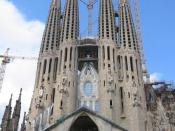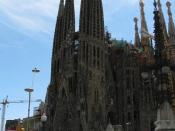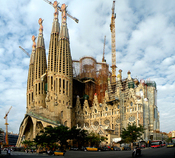Antonio Gaudi - the Master of Architecture.
Leading the Spanish Modernist movement, Antoni Gaudi has been classified with Gothicism and Surrealism, however, in reality there is no word except Gaudiism. He was influenced by Oriental styles, nature, sculpture, and a desire to go beyond anything that had ever been done before. Most of Gaudi's buildings are in Barcelona and reflect his strong Catalan nationalism.
The son of a coppersmith, Antonio Gaudi was born in Reus, Spain in 1852. He studied at the Escola Superior d'Arquitectura in Barcelona and designed his first major commission for the Casa Vincens in Barcelona using a Gothic Revival style that set a precedent for his future work.
In addition, stricken with a rheumatic problem that made walking painful, young Antonio Gaudi often missed school and had little interaction with other children, but had ample time to study nature. While seeking his degree in architecture in Barcelona, Gaudi also studied philosophy, history, and economics.
He believed that differences in architecture were caused by society and politics, rather than aesthetics.
Moreover, Gaudi was granted the title of Architect and presented his first major project, the MatarÃÂ Cooperative (a housing project for factory workers), at the Paris World Fair in 1878. Far ahead of his time, only a small portion of the project was actually built, but Gaudi's name became well known.
In 1882, Gaudi began work on his greatest project, the Sagrada Familia church, taking over from Francisco de Paula del Villar. For nearly 30 years, Gaudi worked on Sagrada Familia and other projects simultaneously, until 1911, when he decided to devote himself exclusively to the church. During the last year of his life, Gaudi lived in his studio at Sagrada Familia.
Tragically, in June, 1926, Gaudi was run over by a tram. Because he was poorly...


